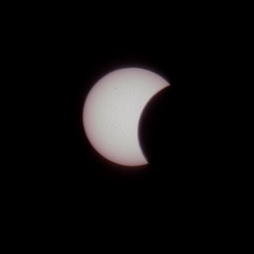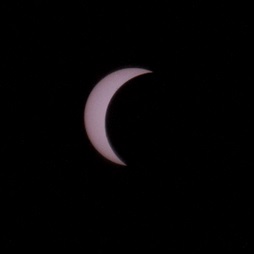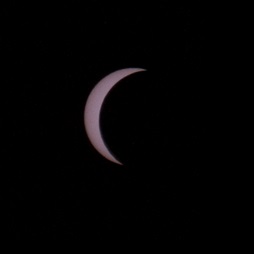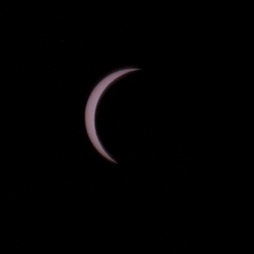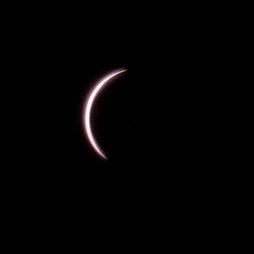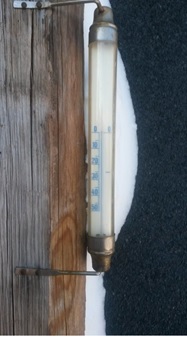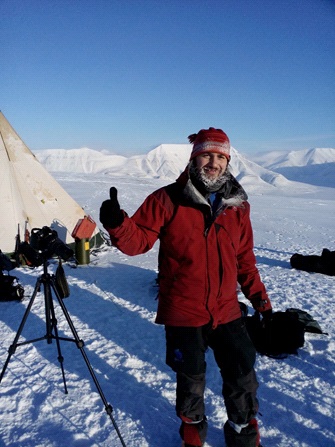Svalbard – a box of chocolates.
Forrest Gump was right when he said “life is like a box of chocolates – you never know what you are going to get” and so is the trip that I took to Svalbard, an archipelago off Norway’s northen coast, just 1000 km away from the North Pole at 78º Northern Latitude. I have been engaged in amateur astronomy since I was 12 y.o. and had the chance to be invited to come to Spitsbergen (Svalbard), the biggest island and the only from the archipelago with permanent human occupation, to watch the Total Solar Eclipse of 20th March 2015.
I had heard about Svalbard a couple of times before, I had seen a documentary about the Seed Vault, a huge man-made modern Noah’s Ark, to keep and protect millions of seeds from around the world and preserve it for future human generations from things such as a Nuclear Apocalypse (yes you read it right) and guarantee the mankind will have in the future the same biological resources as we have today. Svalbard’s soil is deeply frozen – permafrost - all year around. This makes it the ideal for this kind of projects. But Svalbard is special on its own, although only 2600 people live here there are more than 50 nationalities living here in harmony, scientific stations from a couple dozen countries to study from climate changes, to marine biology or astronomy related subjects like the northern lights. This seemed to be the appropriate place for such an event as the Solar Eclipse. The Solar Eclipse was due to cross Svalbard and Faroe Islands (north of Scotland). Many chose Faroe Islands, as it has a mild climate while Svalbard has an extreme weather with extreme temperatures.
Svalbard’s capital is Longyearbyen. The most northern settlement on Earth.
There you have, an invitation to watch the Solar eclipse at the end of civilization and lots of googling to prepare myself for the trip. I wouldn’t see myself doing this just a couple of months ago. Now I had 4 week to prepare myself. Going to Svalbard requires some preparation. Clothing that can withstand -50 C is a must have if you want to survive the artic. One must also be aware about the risks involved in going to a place with extreme temperatures and few human infrastructures. Even so it was worth taking the chance and I certainly did.
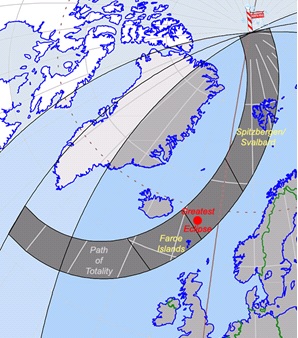
Path of Solar Eclipse.

First impressions outside the airport.

Plateau, down there Longyearbyen.
Fit, fit, fit.
No, this is not astronomical jargon for astrophotography related file extensions .FIT. But to be fit is of the outmost importance when coming to an archipelago about the size of Bavaria with only a few thousand people. You have to rely on yourself and you have to be fit to come to the Artic, acclimatisation takes a while and lots of walking is necessary. Going out from the airplane a feeling the deep freezing air is quite an experience. The tiny airport is just a few kms away from Longyearbyen, Spitsbergen biggest settlement, which is located between and below two plateaus. Temperatures are extreme in March reaching easily -30 C and perceived temperatures going lower with wind.
To survive people have to be healthy and fit. Old people, sick people, i.e. people that cannot take care of themselves are not allowed in the archipelago. Even more strange is neither births or deaths are allowed…
Svalbard is the closest you get from Far West kind of life style in modern days. Most of the original settlers that came to these islands since 17th century were adventurers and they had to be fit and prepared for the life conditions here. People started to settle because of the coal mines and hunting and it seemed logical for them to live next to their resources. This means the Longyearbyen settlement was not planned as a normal town. It related to what people had available, it does not get much sun light even during summer time. The mountains offer some protection against frosty wind but hide the Sun. Most economical activity is related to coal extraction, scientific research and tourism. To watch the solar eclipse one has to climb out of town. To one of these plateaus who are roughly 400 meters above sea level, covered with snow and ice and very steep slopes to get there.
The local government assigned two locations in the settlement so people could watch the event in a safe area, although the mountains conceal some part of it. While for most people this is as good as they can get and they are happy to it does not make sense for me and many that travelled the world to see the Solar Eclipse. It was obvious that we had to find a way to get to one of the plateaus to get a view of all of it.
Bear protection
There you are, you landed and one of the first things you see going out of the airport is warning signs. From this point on you need bear protection I assume that is what they say as my Norwegian needs some work. These signs are at the edge of the settlement and are to be taken seriously. Basically when you leave the Longyearbyen settlement you are putting your life at risk. Even climbing to the nearest plateau to watch the Sun Eclipse means you need to get some protection against polar bear attacks. This means one thing only, either you rent a rifle (yes you can do that here – just pay and sign a piece of paper) or you hire a local guide that knows how to handle a situation like that, this is in case you meet one of those big hungry polar bears, you either scare him or as last resource it is you against him and you better know what you are doing.
We chose the last option, hire ourselves a guide. Just a few day before, a group of Czech tourists was attacked by a polar bear, sadly one man was severely injured on his face and neck, and the polar bear had worse luck and was unfortunately shot by the guide. At the end of winter Polar bears are starving and are desperate, this is when they will do anything to survive including killing humans if necessary. So these things are real here.
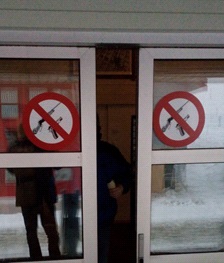
No guns please.


At the plateau. Eclipse had already started.
The perfect day
I think I didn’t slept much during the night before the eclipse. Did we pack all we needed, had we forget something? Were the last-night’s-kind-of-on-a-hurry-self-made-solar-filters in good shape and would they work? We couldn’t take all the gear that we had brought so we had to rationalize. Climbing with a back pack full with tripods and cameras was already at our physical limit as our Japanese colleagues would latter experience. I had to cut to half the things I wanted to bring.
At 6h00 we were already up, super breakfast is mandatory, bodies burn a lot of calories just to get warm. We waited for the guide to take a group of 12 people to the top of the plateau. Thermometer on the outside wall marked -20 C but there was no wind. Wind and super low temperatures are a bad combination. We started our climbing at 8h30 from the local church. The guides promptly prepared their rifles with live ammo. People can walk themselves with guns inside the settlement but there are rules to avoid accidents. Most building have signs inviting people to leave guns outside or keep them in a locker. Outside the settlement guns must be ready to be used if necessary. The guide asked us to keep close to one another for safety reasons. In the past there had been some attacks on the same plateau that we were going to. Now that was encouraging, I have never seen such a tight flock. The group was separated into two with one guide assigned to each. By 10h10 first group had reached the plateau, 10 minutes later the second group reached the plateau, our Japanese colleagues were struggling, they seemed to have brought all Japan with them. We rushed quickly getting everything ready. The day was perfect, blue skies, no wind and a perfectly clear atmosphere. We were very lucky, just the day before we had wind and clouds but the Gods offered us the unique chance to see the event. One could feel the electricity in the air, the excitement on people’s face. We had a little UN set up. People from Portugal, Austria, Germany, Tunisia, Greece, Japan, Italy, Norway and the USA. Our youngest tea member was a 9 y.o. girl from Austria. All with the same purpose to see the biggest natural phenomenon on Earth. The guides had prepared a Tipi tent to protect us from the elements that soon would prove to be of the outmost importance.
It goes really fast and it gets really cold!
I had seen many solar eclipses before, I was 8 y.o. back in the 80’s when I saw my first total eclipse, but to be honest I don’t recall much of it. But I had seen annular and partial eclipses many times before. Total Solar eclipses usually take about a couple of hours and totality this time would last 2min 28 sec. But eventually one loses the notion of time being so engaged with organizing and preparing stuff. Everything must be perfect, there will be no second chance, and time seems to run unusually faster. We had already lost first contact as the climbing took more time than we expected. People set their setup and pointed the cameras to the Sun to get the best of it. Some cameras died immediately. Mine too, the batteries although fully charged don’t work very well at low temperatures as many of us only found out at that point. We have heard about this but never thought it could be immediate. I tried to keep the batteries close to my body so they didn’t get too cold. But the one in the camera went through a lot during the climbing. So I had to quickly get my backup battery. The eclipse started 10 minutes ago. The plan was do some shots and then I would keep the battery really close to my skin, to keep it warm. It worked and eventually I was able to shoot trough totality and past. I was very happy and very cold, it all worked as planned. Unbelievable. Many from the group had travelled the world to see past eclipses and they said these was one of the best they had seen. But it had a toll, you know when you reach your limit when you no longer feel and control your hands movements. Not even to put your thermo gloves on. Yes, the temperature had reached an astonishing -30 C. Totality dropped the temperature by 10 C from -20 C to -30C. We were standing still and the body temperature was getting deadly cold. Running is the best to keep foot circulation, and so we did, running around trying not to get to far from the group. The guides said, I cannot shoot a Polar Bear more than 100 meters away, I guess we all run in very tiny circles around the tent. The guides had installed a tipi tent with heating inside. This is a Tipi with a fuel powered heating device. It keeps the tent warm when compared to the outside. There was only -5 C inside but it looked like sauna to us. We would hop in and out to do some more shots. The little poor 9 year old girl had problems already, it was too cold for her. Smaller bodies loose heat faster than bigger ones. All tried to help her some gave her chemical heat packs to warm her hands, I gave her my stool so she could keep her feet off the ground. She finally made it and started to warm up. Some were inside the tent to cheer her up having a cup of tea or coffee. Our hot drinks were rock frozen after just a few minutes. Iced tea time everybody!

Shooting the Solar Eclipse.
|
|
|
|
|
|
|
|
Totality.
A few seconds before totality the flying shadows start to appear on the ground, I had never seen this before but I heard about it. They look like wandering snakes on the ground, running all in the same direction. The rippled ice makes this even more obvious, snow ripples are all oriented to the same wind direction with small curves. I had a chill on my spine and it was not because of the freezing cold. It is time to remove the solar filter from the camera’s objective and start to take picture as much as you can. A few moments later the Moon completely covers the Sun, and there you have, totality. The day becomes night and the first bright stars start to appear. “Look Venus” someone said, the horizon is orange-pink and the Sun is dark black, a little bit like the “Eye of Sauron”. One easily see protuberances and suns magnetosphere like vapour coming out of the Sun. Corona was greenish white greenish. Quite unusual and also quite incredible. People were shouting and hugging each other. For me it seemed to last 20 seconds although it lasted more than 2 minutes. I bet our cameras shot hundreds of pictures.
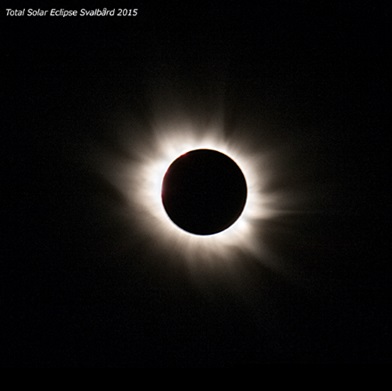
Gear and stuff
I brought an old Canon 400D with its original camera objective. But this is not good enough to get detail during the Solar Eclipse. A tele objective is recommended. A good friend borrowed me a 200mm Tamron tele-objective. Solar filter is necessary when photographing the Solar Eclipse. My personal choice was Baader Astrosolar film, they have been around for quite a while and are extremely economical. With a little bit of patience one can make a good solar filter to fit a telescope or a camera objective. Glue and some tape is also necessary. It is also good to bring a good tripod. The one that I had was OK, actually it was the only one who fitted into my back pack, but a sturdied tripod would be better. I should have brought the remote trigger for the camera, although some photos are sharp, some others are useless because they caught movement. A stool is also recommended to keep some comfort.
Camera: Canon 400D; ISO 800; MF; several exposure times
Objective: Tamron 200mm Apo
Filter: Baader Astrosolar film
|
|
|
|

